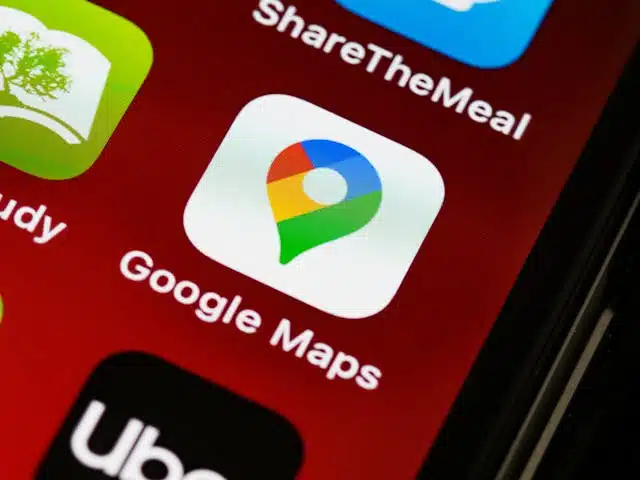Users must switch to the Google Maps app to access their location history as Google transitions the timeline feature to mobile-only
Google is transitioning its Timeline feature from the web to the mobile app, requiring users to switch to the app to access their location history. The tech giant announced that starting December 1, 2024, the Timeline feature will no longer be available on the web version of Google Maps. Users who don’t make the switch by this deadline will see most of their routes and visits automatically deleted.
The Timeline, introduced in 2015 as an evolution of “location history,” allows users to track places they have visited and routes they have travelled. It also integrates photos taken at specific locations for a comprehensive overview of travels. In a move aimed at giving users more control over their data, Google announced that Timeline data will now be stored directly on the user’s device rather than on Google’s servers.
Embed from Getty ImagesGoogle stated that this transition will enhance users’ privacy and control over their data. By moving the Timeline feature to the app, users’ data will be stored locally, providing them greater autonomy. However, this change means that accessing Google Maps on the web will no longer display any location history.
Users must update to the latest version of the Google Maps app and follow the provided instructions, which will be delivered via push notifications, in-app alerts, on-screen prompts, or email. Failure to transition by December 1, 2024, will result in the loss of stored data, although Google plans to transfer up to 90 days of Timeline data to the “first-signed-in device” post-deadline, with earlier data being auto-deleted.
Reactions to this update have been mixed. Some users expressed disappointment on platforms like Reddit, with one user noting, “I use Google Timeline on the web daily, and this is very bad news for me.” Others saw potential benefits, suggesting that the move might lead to improvements in the mobile app’s Timeline feature.
Despite the concerns, Google assures users that the transition will be gradual, and notifications will be provided when updates are available for their accounts. The shift to mobile is designed to streamline the user experience and ensure that data management is more secure and user-controlled.
Analysis
Political Impact: Removing the Timeline feature from the web version of Google Maps may seem minor on the surface, but it touches on broader issues of data privacy and user control. Governments and regulatory bodies are increasingly scrutinizing how tech giants handle personal data. Google’s decision to store Timeline data on users’ devices rather than its servers could be seen as a proactive step to comply with stricter privacy regulations and avoid potential political backlash. This move may influence other tech companies to adopt similar practices, thereby shaping future data privacy policies and legislation.
Social Reflection: The transition of the Timeline feature to mobile reflects a societal shift towards prioritizing privacy and personal data control. In an era where digital footprints are under constant surveillance, users are becoming more conscious of their online privacy. Google’s move aligns with this trend, demonstrating a response to growing consumer demand for greater autonomy over personal information. However, it also highlights the digital divide, as those who rely on web-based services may find this transition inconvenient, potentially exacerbating the gap between different user demographics.
Psychological Aspect: From a psychological perspective, the shift from web to mobile for accessing Timeline data may affect user behaviour and interaction with the service. Users accustomed to the web interface may experience frustration and resistance to change, impacting their overall satisfaction with Google Maps. However, the promise of enhanced data control and privacy may alleviate some concerns, as users feel more secure knowing their information is stored locally. This change could lead to increased trust in the app, potentially boosting user engagement in the long run.
Sociological Angle: Sociologically, this transition underscores the increasing reliance on mobile technology for everyday tasks. The web’s diminishing role in favour of mobile apps reflects broader societal trends where smartphones are the primary medium for digital interaction. This shift may influence social behaviour, with more users engaging with location-based services on their mobile devices. Additionally, it emphasizes the importance of adaptability in the digital age, as users must navigate and adjust to new technological landscapes.
Fashion Culture: While the transition of the Timeline feature may not directly influence fashion culture, it indirectly highlights the tech industry’s influence on lifestyle trends. Mobile apps like Google Maps are integral to modern living, dictating how people navigate and interact with their environments. As mobile technology continues to evolve, it may inspire new fashion trends centred around mobile accessories and wearable tech, reinforcing the symbiotic relationship between technology and fashion.
